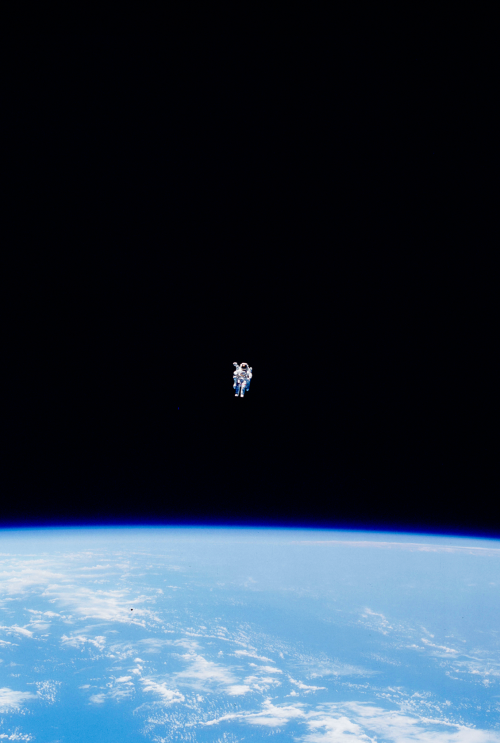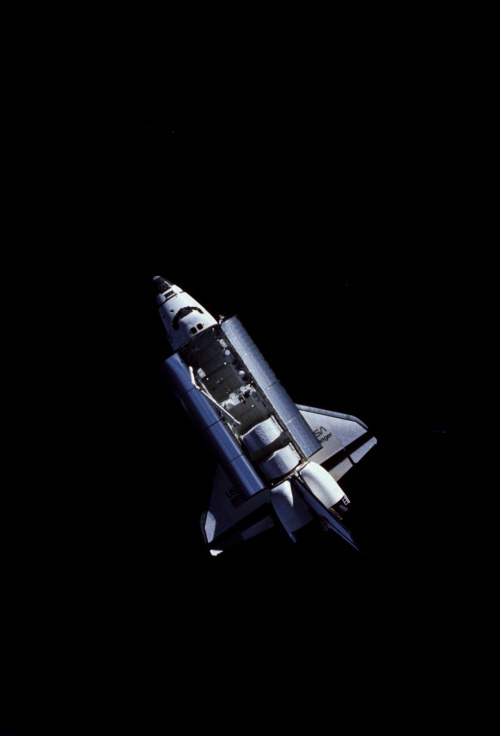Ah Yes, An Apollo CSM Can Hold Five People
Ah yes, an Apollo CSM can hold five people

More Posts from Cozy-airlessness and Others










11. Gemini 7 and Gemini 6A
(Combining these two, or else I wouldn’t be able to fit every manned flight into a 20 day countdown!)
Date: December 4-18, 1965 (Gemini 7: 13 days, 18 hours, 35 minutes, 1 second) and December 15-16, 1965 (Gemini 6A: 1 day, 1 hour, 51 minutes, 24 seconds)
Crew: Frank F. Borman II and James A. “Jim” Lovell, Jr. (Gemini 7) and Walter M. “Wally” Schirra, Jr. and Thomas P. Stafford
Mission Highlights: The original Gemini 6 flight was set to take place in October 1965, to rendezvous and dock with the unmanned Agena Target Vehicle (ATV). However, the ATV exploded shortly after launch on Oct. 25, leading to the cancellation of Gemini 6. The mission was altered to work with another Gemini flight flying later that year, and renamed Gemini 6A.
6A’s sister flight, Gemini 7, launched on December 4th, piloted by spaceflight rookies Frank Borman and Jim Lovell. The main objective of Gemini 7 was to complete a long-duration spaceflight, testing the effects of the longest spaceflight to date (two weeks) on the human body. Testing food rations, undergoing medical experiments, collecting bodily waste samples, and trying to get comfortable in the extremely tight quarters proved to be challenging at times.
Meanwhile on the ground, Gemini 6A suffered significant delays that pushed launch from December 12 to the 15th. Once reaching orbit, Gemini 6A and Gemini 7 commenced rendezvous. Over the next four hours, the two spacecraft came within a foot of each other. An earlier proposal had included a double-EVA in which Jim and Tom would switch spacecraft, but that plan was eventually rejected on several grounds. However, both crews were impressed with the navigational abilities of the Gemini spacecraft and precision of rendezvous.
The next morning, shortly before Gemini 6A’s reentry, Wally spotted an unidentified (and particularly festive) flying object “in a polar orbit” around the Earth… (which also led to the first musical performance broadcast from space)!
After Gemini 6A descended to Earth, recovered by the USS Wasp in the Atlantic, Jim and Frank were left with three days in space and quite a bit of boredom. Malfunctions frustrated the tired and cramped (and smelly) crew. At some point, one of the astronauts (Jimbo) lost his toothbrush, forcing them to share just one. The crew was very eager for reentry by December 18. When the crew was recovered by the USS Wasp nearly 14 days after launch, Jim and Frank announced their engagement to the frogmen!
Significance: Both the successful rendezvous and long-duration flight were significant accomplishments for the American space program, as both objectives were essential to a lunar mission. The stellar rendezvous allowed NASA to move forward with an attempted docking (we’ll see how that goes tomorrow…). Several lessons were learned by forcing two astronauts into a tin can together for two weeks, many of which helped to improve the experiences of future Gemini and Apollo crew members. And, of course, the lifelong friendship between two American heroes became even closer (er, maybe a little too close?)

The first all-woman spacewalk
Today the first ever spacewalk consisting of entirely women occured!
Here are the two women who were a part of this EVA.
Christina Koch

Age 40
Two Bachelor of Science degrees, Master of Science degree in Electrical Engineering
Jessica Meir

Age 42
PhD in Marine Biology, Master of Space Studies
It is standard procedure for spacewalks to consist of more than one person. That way if something bad happens to one astronaut, the other can be there to help immediately.
Previous spacewalks were either a single male in the early days, multiple males, or a mix of men and women. Today the first ever all-woman spacewalk took place with two women going outside the International Space Station.
NASA has stated "The all-woman spacewalk wasn't something we purposefully planned, though. It was bound to happen eventually because of the increasing number of female astronauts. Koch's and Meir's 2013 class of astronaut candidates was 50 percent women.
"Spacewalk assignments are always made on the basis of which astronauts are best prepared to accomplish the tasks at hand under the conditions at the time. Spacewalks are not easy; astronauts typically describe them as the most physically challenging thing they do."
The mission lasted about 6 hours and was to replace a battery on the exterior of the station that failed to activate after prior testing (most spacewalks have objectives this boring).
Tracy Caldwell Dyson, another female NASA astronaut, remarked "Hopefully this will now be considered normal"
This is a good day for women I think :>
Holding out for the first all non-binary spacewalk
Meet the Four Artemis Astronauts Who Will Fly Around the Moon

Today, we revealed the four astronauts who will fly around the Moon during the Artemis II mission, scheduled to launch in 2024. Get to know them:
Christina Koch

Meet the first member of our Artemis II crew: mission specialist Christina Koch. Koch visited the International Space Station in 2019, where she participated in the first all-woman spacewalk with Jessica Meir. She began her NASA career as an electrical engineer at Goddard Space Flight Center.
Jeremy Hansen

Representing the Canadian Space Agency is Jeremy Hansen from London, Ontario. Col. Hansen was a fighter pilot with Canadian Armed Forces before joining the Canadian Space Agency, and currently works with NASA on astronaut training and mission operations. This will be Col. Hansen’s first mission in space.
Victor Glover

Victor Glover is our Artemis II pilot. Glover is part of our 2013 class of NASA astronauts and was the pilot for NASA’s SpaceX Crew-1 mission. He’s logged 3,000 flight hours in more than 40 different aircraft.
Reid Wiseman

...and rounding out our Artemis II crew: mission commander Reid Wiseman. Wiseman lived and worked aboard the International Space Station as a flight engineer in 2014. He also commanded the undersea research mission NEEMO21, and most recently served as Chief of the NASA astronauts.
Make sure to follow us on Tumblr for your regular dose of space!

The spacecraft Rosetta made this incredible picture during a Mars flyby!


The view of and from Bruce McCandless while conducting the first untethered EVA and preliminary test-flight of the Manned Maneuvering Unit (MMU) on February 12, 1984. Bruce ventured approximately 320 feet from the orbiter.








Full Thrust "Goldilocks"


Spectrum of overwhelm, now in triangle form due to popular demand
[Image description: A triangle chart titled, ‘Spectrum of Overwhelm.’ The three points are ‘404 Error,’ showing a person with an empty thought bubble; ‘wet beast,’ showing a person sweating and sobbing; and ‘rage beast’ showing a person clenching their fists in an outline of orange fire. The peak is the ‘404 error’ vertex, and the inside of the triangle here is coloured beige and labelled, ‘shutdown.’ The lower half is labelled ‘meltdown’ and is red on the rage beast side and blue on the wet beast side. \End description]



Down the ladder, Apollo 12, 19 November 1969.
-
 lostinspaceage82 liked this · 3 years ago
lostinspaceage82 liked this · 3 years ago -
 patternseekers reblogged this · 5 years ago
patternseekers reblogged this · 5 years ago -
 lowercase-morass reblogged this · 5 years ago
lowercase-morass reblogged this · 5 years ago -
 ptsd-is-a-bitch liked this · 5 years ago
ptsd-is-a-bitch liked this · 5 years ago -
 good-and-colorful liked this · 5 years ago
good-and-colorful liked this · 5 years ago -
 cozy-airlessness reblogged this · 5 years ago
cozy-airlessness reblogged this · 5 years ago -
 factoresmutuos reblogged this · 5 years ago
factoresmutuos reblogged this · 5 years ago -
 idreamilyatomiccollector liked this · 5 years ago
idreamilyatomiccollector liked this · 5 years ago -
 t-ycho reblogged this · 5 years ago
t-ycho reblogged this · 5 years ago -
 t-ycho liked this · 5 years ago
t-ycho liked this · 5 years ago -
 footnoteinhistory liked this · 5 years ago
footnoteinhistory liked this · 5 years ago -
 x-15 reblogged this · 5 years ago
x-15 reblogged this · 5 years ago -
 mhthehorizon-blog liked this · 6 years ago
mhthehorizon-blog liked this · 6 years ago -
 undergroundlord1603 reblogged this · 7 years ago
undergroundlord1603 reblogged this · 7 years ago -
 antonio-rodrigues-pinto liked this · 7 years ago
antonio-rodrigues-pinto liked this · 7 years ago -
 2000ruben liked this · 7 years ago
2000ruben liked this · 7 years ago -
 mistergoldfox liked this · 7 years ago
mistergoldfox liked this · 7 years ago -
 dx94 liked this · 7 years ago
dx94 liked this · 7 years ago -
 eazywriter liked this · 7 years ago
eazywriter liked this · 7 years ago -
 theetanoicos liked this · 7 years ago
theetanoicos liked this · 7 years ago -
 dunkthedog reblogged this · 7 years ago
dunkthedog reblogged this · 7 years ago -
 fantasyland1000 liked this · 7 years ago
fantasyland1000 liked this · 7 years ago -
 uncharted-space reblogged this · 7 years ago
uncharted-space reblogged this · 7 years ago -
 dvmac reblogged this · 8 years ago
dvmac reblogged this · 8 years ago -
 westbysouthwestern liked this · 8 years ago
westbysouthwestern liked this · 8 years ago -
 j-c-laredo liked this · 8 years ago
j-c-laredo liked this · 8 years ago -
 dobie56 liked this · 8 years ago
dobie56 liked this · 8 years ago -
 intospace890 liked this · 8 years ago
intospace890 liked this · 8 years ago -
 sefaeraslan liked this · 8 years ago
sefaeraslan liked this · 8 years ago -
 nelc liked this · 8 years ago
nelc liked this · 8 years ago -
 redbank2 reblogged this · 8 years ago
redbank2 reblogged this · 8 years ago -
 levogiro liked this · 8 years ago
levogiro liked this · 8 years ago -
 fl-shpoongle-blog reblogged this · 8 years ago
fl-shpoongle-blog reblogged this · 8 years ago -
 slab-o-meat liked this · 8 years ago
slab-o-meat liked this · 8 years ago -
 criticalspaceitem reblogged this · 8 years ago
criticalspaceitem reblogged this · 8 years ago -
 gianlucavisconti reblogged this · 8 years ago
gianlucavisconti reblogged this · 8 years ago -
 magazineprefecture liked this · 8 years ago
magazineprefecture liked this · 8 years ago -
 untoldapollo liked this · 8 years ago
untoldapollo liked this · 8 years ago -
 wimagine liked this · 8 years ago
wimagine liked this · 8 years ago

21 · female · diagnosed asperger'sThe vacuum of outer space feels so comfy :)
233 posts



